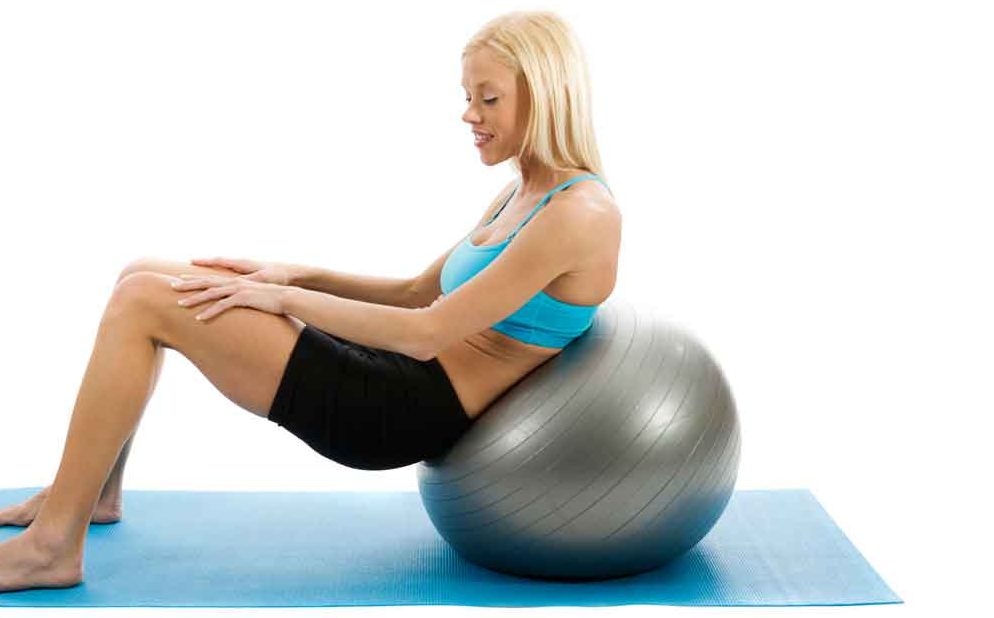How to Do a Pelvic Tilt

It may seem counterintuitive, but sitting all day contributes to back pain. Pelvic tilts can provide relief for low back pain and tone your abs and glutes.
Often prescribed for low-back pain, this exercise is also good for anyone who wants to loosen up their spine and tighten up their abs.
It may seem counterintuitive, but all of the sitting many of us do, hour after hour, day after day, is one of the primary culprits of back pain. It’s all about mechanics. When we sit, it shortens our hip flexors. When sitting is more or less a permanent condition, our hip flexors eventually atrophy.
YOU MIGHT ALSO LIKE: Functional Fitness – Workouts for What Your Body Was Intended to Do
What is a hip flexor?
Your hip flexors are what makes it possible to raise your leg if you step up on a stool, for example. Or, if you’re lying on your back, they are the muscle complex that enables you to lift your leg. Hip flexors are the mechanical part of what brings your legs and torso together.
Hip flexors are composed of several muscles that run deep inside your pelvis. You can’t see them, but when they aren’t working right you can certainly feel them. The most important of these muscles — the iliopsoas — is composed of two smaller muscles — the iliacus and the psoas.
When the muscles that help you fold in half become shortened, your body must compensate for this lost flexibility so you can stand upright. Tight hip flexors pull your pelvis forward and down, causing your lower back to become compressed and resulting in the classic “swayback” (hyperextension). That posture strains not only your back but also your glutes and hamstrings.
How to do a pelvic tilt
To relieve back pain, the pelvic tilt creates a movement that counters the compression that occurs with hyperextension of the lower back.
Anterior pelvic tilt exercises help when your hips get pushed out and your ribs protrude downward. Posterior pelvic tilt exercises help when the front of your pelvis rises and the back drops. Pelvic tilts are also prescribed as a remedy for people with spinal stenosis.
To do a pelvic tilt, lie on your back on a yoga mat or other soft surface with your knees bent and your feet flat on the ground, hip-width apart. Most people have a natural arch to their back. You should be able to slide your fingers or whole hand into the space between your low back and the floor.
From this position, with your hands at your sides or resting on your hips, slowly exhale. As you exhale, roll your pelvis toward your head, contracting your abdominal muscles and flattening your lower back against the floor. Hold for a few seconds, then release the contraction as you inhale and return to the starting position.
This is a pretty small movement that, when done correctly, is confined to just your pelvis. Although the move is subtle, it effectively creates space between the vertebrae of your lower back while strengthening the muscles in your abdomen and pelvis.
Avoid pressing down with your feet, legs, or neck to achieve this motion. The rest of your body should remain relaxed while you focus on contracting the muscles of your abdominal wall and lengthening your lumbar spine. Repeat 10 to 15 times.
Consider adding another set or two as you get stronger or your back pain is relieved.
Modifications
For a bit more of a challenge, you can also do pelvic tilts while you stand. Lean against a wall with your heels about a foot away and your legs slightly bent. Make sure the back of your head, your upper back, and butt are against the wall. You should have the same space between the wall and your lower back as you would if you were lying on the floor.
While exhaling, slowly contract your abdominal muscles so your pelvis rocks forward (toward your head) and your back flattens against the wall. Hold for a few seconds, then relax while exhaling and return to the starting position. Repeat 10 to 15 times, adding more reps or sets as appropriate.
If you are pregnant or cannot tolerate either of the other two positions, try the pelvic tilt on all fours. With your hands directly below your shoulders, knees directly below your hips, and your spine parallel to the floor, exhale while contracting your abdominal muscles and tilting your pelvis toward your head. Hold the position for a few seconds, exhale while returning to the starting position, and repeat.
If you suffer from severe back pain, talk to your doctor, chiropractor, or physical therapist before attempting to resolve your condition with exercise. If you suffer from mild or occasional low-back pain, give pelvic tilts a try. This simple little exercise could provide some major relief.
YOU MIGHT ALSO LIKE: Stretching Relief for Hip and Back Pain
Updated:
July 28, 2023
Reviewed By:
Janet O’Dell, RN